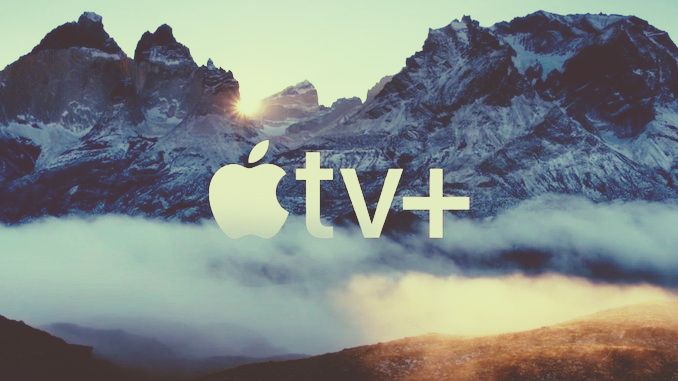
- Apple TV+ Expands Its Film Portfolio: Quality Over Quantity
- Inflation Woes: Price Increases, Subscriber Churn, Advertising
- Worldwide Film & Television Distribution Intelligence
- Apple and Paramount Bundling Partnership Eminent
- Apple’s Quest for a Mega-Hit Show
- FilmTake Away: Apple Can Afford Differentiation
In 2023, the streaming industry underwent a significant transformation, shifting away from the frantic growth of previous years towards a more pragmatic approach. Viewers continued to abandon traditional PayTV in droves in favor of streaming platforms, leading to an overall stabilization of subscriber levels, but at a much lower price point.
Notably, Netflix maintained its position as the industry leader, bouncing back from the challenges it faced the previous year. However, the focus for streaming platforms has evolved, with profitability now taking precedence over explosive growth, as media conglomerates face strong economic headwinds. These challenges have led to endless consolidation talks and further shake-ups among the largest media companies in the world.
Throughout January and February, FilmTake will explore the advantages and challenges facing the leading streaming services, starting with Apple TV+ herein and continuing with a review of Disney-owned services, Disney+ and Hulu.
Apple TV+ Expands Its Film Portfolio: Quality Over Quantity
Apple Studios is gearing up to make a significant foray into traditional cinema, with plans to allocate $1 billion annually to produce original films designed for theatrical release. The tech giant intends to screen these films in thousands of cinemas, with a minimum run of one month. Apple is almost single-handily restoring a semblance of the theatrical window with a pledge to maintain considerably longer theater runs than its streaming competitors, especially compared to Netflix. This strategic move aims to establish Apple Studios and Apple TV+ as formidable players in the film industry. While specific details and partnerships are yet to be confirmed, discussions with other studios are underway to streamline the logistical aspects of this ambitious initiative.
In 2023, Apple TV+ made significant strides in the film business, achieving a notable milestone by releasing high-profile films like Martin Scorsese’s “Killers of the Flower Moon” and Ridley Scott’s “Napoleon” through distribution deals with Paramount and Sony, respectively. The coming year promises even more cinematic offerings with several significant productions with major stars, including Brad Pitt, George Clooney, and Scarlett Johansson. While the films above faced losses in theaters, Apple’s strategic goal differs from its competitors, focusing on long-term subscriber retention through prestige films.
While Apple has previously dipped its toes into the traditional theatrical market, this renewed focus aligns with Amazon’s recent announcement of a similar $1 billion annual investment in films with theatrical releases. As streaming platforms assess content spending for sustainability, Apple’s cinematic expansion could help solidify its status as a must-have service, potentially driving audiences to the cineplex once again and sparking interest in Apple TV+.
Inflation Woes: Price Increases, Subscriber Churn, Advertising
Grappling with inflation last year, Apple TV+ announced sizable price increases. In November, the company initiated its second price hike in a year for U.S. subscribers, raising rates from $6.99 to $9.99 per month. While this increase generates additional revenue to offset production expenses, it risks losing subscribers. With a lack of a robust catalog since its launch in 2019, the service has become vulnerable to churn.
Churn Rates – Top US Streaming Services – Jan 2022 to June 2023
Once seen as less prestigious in the streaming world, advertising-supported services gained traction as Netflix and Disney+ introduced ad-supported tiers at the end of 2022. In 2024, Prime Video is slated to follow suit, while rumors suggest Apple TV+ might also explore this avenue, especially since it doubled its monthly subscription price to $10.
Uncover What Streamers Like Netflix Pay to License Third-Party Films and Shows Worldwide with Distribution Intelligence from FilmTake.
Worldwide Film & Television Distribution Intelligence
Get unparalleled access to market intelligence reports that draw on financial data and insights from dozens of content distribution deals worldwide between key industry participants.

Film and Series distribution rates and terms deriving from dozens of agreements for rights to transmit films and episodic television via PayTV and SVOD.
Choose flexible options for single-user PDF downloads.
Licensing Terms & Included Programs:
Pay-1 & SVOD Rate Cards for Motion Pictures and Series Exhibited Worldwide in Multiple Availability Windows
- Motion Pictures: Pay-1, First Run, Second Window Features, Recent Library Features (Tiers AAA,A,B,C), Library Features (Tiers AAA,A,B,C), Current and Premium Made-For-TV Films and Direct-To-Video Films, covering many license periods over the last decade
- Episodic TV: Current, Premium, Premium Catalog (1HR & 1/2HR), Catalog Series (1HR & 1/2HR), and Catalog Miniseries + Case Studies on Current Mega Hit, Catalog Mega Hit, and Premium Catalog, covering many licensing terms from 2012-2024
- Because most-favored-nation rates operate in practice, the rates and terms apply to a diverse range of content and distributors worldwide in multiple availability windows.
Apple and Paramount Bundling Partnership Eminent
Bundling streaming services marks a significant departure from the traditional model, especially as many studios have spent years re-acquiring films and shows from third-party distributors. The rumored bundle of Apple TV+ and Paramount+ exemplifies a growing trend in a profit-starved segment.
With its relatively small content library but technologically solid foundation, Apple finds a strategic advantage in aligning with Paramount’s more extensive content offerings. This partnership could redefine the competitive landscape in the streaming market and continue to shift Apple towards an aggregator.
Apple’s Quest for a Mega-Hit Show
Apple TV+ has tried and failed to produce a mega-hit show that could attract millions of subscribers, on par with “Yellowstone” or “Game of Thrones.” While “Ted Lasso,” which concluded last year after its third season, was moderately successful, it never entered the zeitgeist. Finding a series that can achieve critical acclaim and viewer engagement presents a formidable challenge, even more so as Apple focuses resources on theatrical releases.
FilmTake Away: Apple Can Afford Differentiation
The year 2023 marked a significant shift in the streaming industry’s approach. As the initial rush for subscriber growth subsided, platforms refocused on profitability. The return of Netflix to its leadership position and the emergence of advertising-supported services highlighted this transformation. Meanwhile, bundling strategies aimed at replicating the cable television model gained momentum, hinting at a new phase of cooperation among industry players.
Apple TV+ made significant strides in expanding its film offerings in 2023 despite facing challenges such as inflation-driven price increases and the need to refine its user experience. The quest for a marquee series remains a prominent concern as the streaming service navigates the competitive landscape in 2024.
Apple’s strategic focus on original films and long-term subscriber retention continues to set it apart in the ever-evolving streaming market.